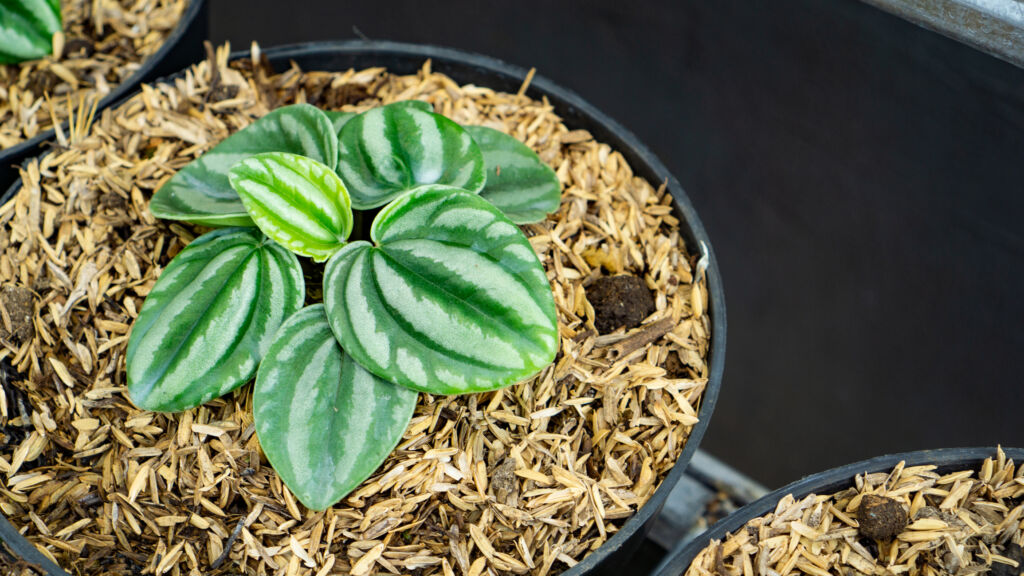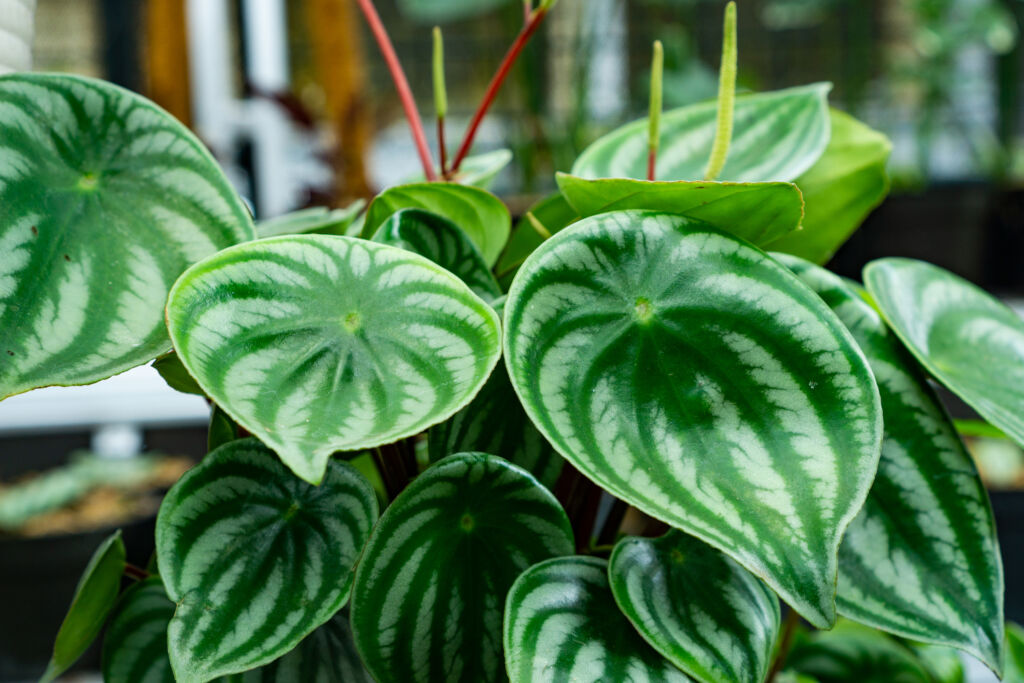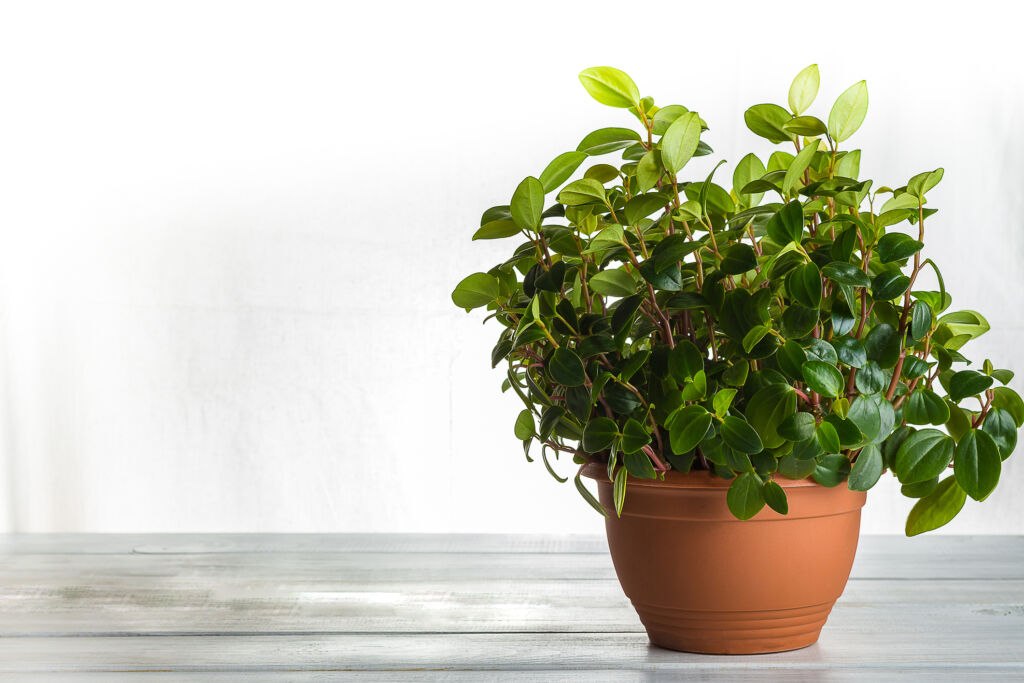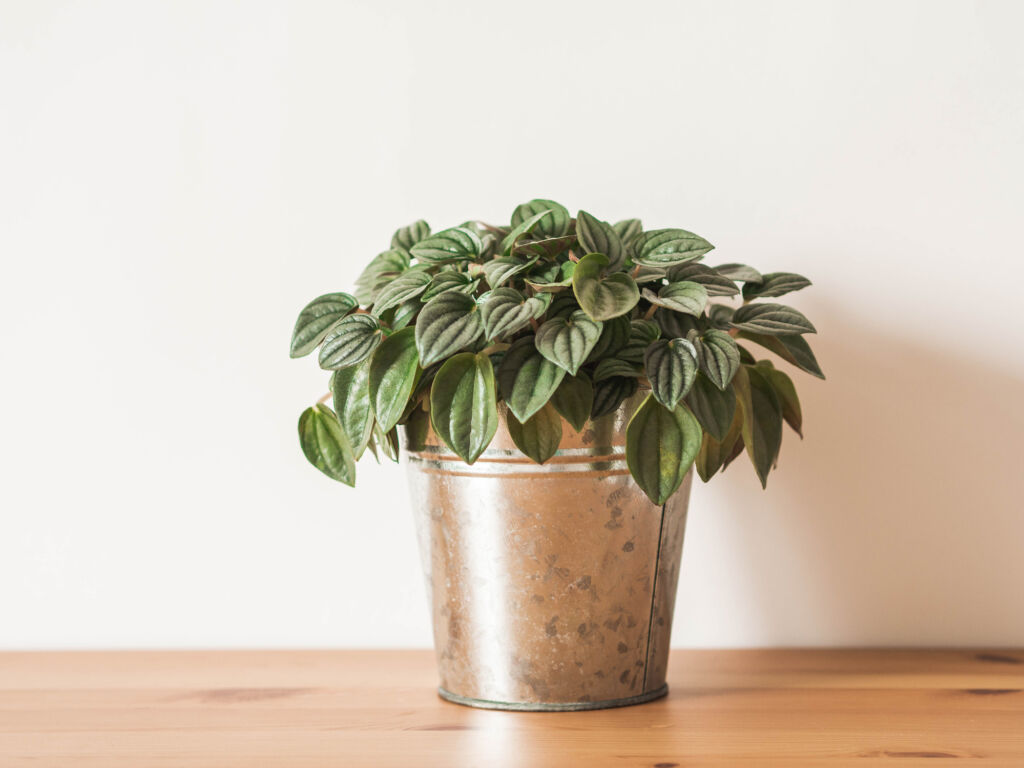HousePlantJoy is supported by our audience. When you purchase through one of our links, we may earn a small affiliate commission. As an Amazon Associate I earn from qualifying purchases. Your cost is not affected.
==================
Caring For Peperomia Plants
Peperomia plants are herbaceous, tropical, and sometimes succulent houseplants. Their varieties are available and often have thick and fleshy foliage plus stems. Many gardeners appreciate their diverse forms and colors. It’s worth noting that these adorable little potted plants are convenient to grow. So it’s clear why amateur and seasoned gardeners consider them preferred and favorites.
They have specific growth, maintenance, and propagation requirements like other plants. But at least they come with anesthetic, care, and health benefits. In this post, we will talk more about these attractive and semi-succulent plants. So read on, and good luck with your indoor gardening!
Describing Peperomia Plants
Many invest in these plants due to their variegated foliage. Diverse Peperomia species come with glossy, rippled, and wrinkled leaves. The patterned foliage exhibit streaked, patchy, and striped designs. The leaves have green colors for the most part and have distinctive plumpness. As for their availability, it’s common to see them inside homes and in shade gardens. But they are present in natural landscapes too. Their visual appeal makes it easy to see why retailers offer them. So they are worth the attention and effort of buying due to their attractiveness.
Thriving in warm areas indoors, people also refer to them as radiator plants. They love it when it’s cozy inside but need some sun to grow. Yet they don’t get tall and only reach about two feet tall or less. They don’t take up plenty of space indoors and can fit right into pots. Their leaves store water and don’t need constant hydration when their foliage is firm. Hence, they are great as space-saving and undemanding houseplants.
Sunlight Requirements Of Peperomia Plants
Homeowners who have these plants put them in areas with windows facing east or south. It’s because these spots are where the sunbeam enters. Radiator plants may do well with five to six hours of daylight exposure. Yet they can’t take long hours of direct sunlight as such may scorch their leaves. Bright and indirect sunlight suits them best for photosynthesis. Even when outdoors, they are ideal in shady spots or places that have high trees or shrubs covering them. In this way, they are very flexible and resilient.
When indoors, putting them near windows where light enters is already helpful. Using fluorescent or grow lights may also substitute daylight for a while. When the days are shorter during wintertime, they need artificial lights for support. It’s for them to get continuous illumination and a bit of warmth. Plus, their metabolism slows down when it’s freezing. Thus they need a reliable light source when the temperatures are low.
Watering Peperomia Plants
Given their structure, they can tolerate drought. They absorb water through their leaves and roots. It’s even best to hydrate them only when necessary because they store liquid for a while. Since they get filled often, they don’t get thirsty right away. Watering them once every week or two weeks will suffice. But it’s crucial to spray mist or pour water when an inch or two inches of the soil is dry. It’s to stop the roots from rotting or getting a fungal infection. Thus the timing for the watering matters a lot.
Sometimes, they need water right away. Don’t hesitate to let them drink when they show signs of dehydration. A few hints of dryness include folding, faded, and crispy foliage. Don’t hesitate to hydrate plants when you see them drooping. Water as usual, as long as the earth isn’t freezing and is dry before watering. Plants also have plenty of moisture when the room has high humidity. So it matters to provide less watering during wintertime.
Temperature Control For Peperomia Plants
It can tolerate a bit of chill but not freezing temperatures. When there’s snow outside, it’s best to take them in. They may tolerate drought but not frost. Also, they need heat when it can get windy and frigid indoors. Hence, it’s ideal to put them close to vents and fireplaces. It’s common for peperomia houseplants to manage 65 to 75 Fahrenheit or 18 to 24 Celcius. For this reason, always having them inside or late in the year makes sense.
Try to put them in the shade to limit their daylight exposure when it starts feeling cold. This process helps them get ready for the winter. Peperomia houseplants are also sensitive to temperature. They can also get shocked by extreme temperature alterations. Gradual exposure to cold may help get them acclimated to the weather change. Yet it’s better to have heating appliances indoors for this reason. It’s to provide comfort to potted plants when it becomes chilly. So it may take effort to get these plants accustomed to atmospheric conditions. But they are receptive to acclimation techniques and can adapt very well.
Fertilizing The Radiator Plant Soil
Peperomia plants a fertilizer with more nitrogen than potassium and phosphorus. They do a lot of photosynthesis which explains why they need extra nitrogen. Their phosphorus requirements are low since roots aren’t that big and long. Still, the potassium is somewhat lower than nitrogen. The levels are such due to the average need for stem growth. But balanced fertilizer will do in the absence of fertilizer with an N-P-K ratio of 3:1:2. With the right plant food, there will be growth, greener leaves, and stronger roots. So it matters to get some fertilizer for your radiator plants.
Aside from knowing what plant food to use, the timing is crucial too. It means you need to do more than feed your plants at random. People observed that it’s best to put some compost on these during the growing season. It means giving liquid fertilizer every two weeks, from June to September. Unlike in winter, these plants are active in summer. When it gets cold, it’s time to reduce soil fertilization. Reducing your usage of fertilizer helps prevent root rotting. Still, folks use diluted liquid fertilizer since it has less salt. In this way, you won’t dehydrate your plants by accident. Hence, the frequency of fertilization matters when taking care of radiator plants.
Peperomia Pest and Disease Treatment and Prevention
On occasion, peperomia plants get sick due to improper care and neglect. Even if they are low-maintenance, checking them is crucial in keeping them alive. Some factors may affect their sunlight exposure and moisture levels. Partial daylight is good for them, but too much of it may cause dampness. Another thing that could cause wetness is overwatering. Plants can also drown when they get too much water because it makes their roots unable to breathe. Plump leaves and roots also attract bugs that feed on plant saps. Hence, the key to healthy peperomia houseplants is to see that they don’t get saturated with water. Give them enough water, warmth, and daylight to thrive.
Aphids and mealybugs are some of the known pests of our radiator plants. Their presence often causes stunting, growth deformity, wilting, and even death. Removing them involves plucking them from the plants. For convenience, insecticidal soaps and similar solutions are available too. Look for holes in your plant foliage to see if they are around. Sometimes you won’t see punctures but discover dust-like particles. So it’s sensible to make time to wipe the leaves of these plants rather than to keep them dusty.
Benefits Of Radiator Plants
Peperomia plants purify the air of impurities. Aside from converting carbon dioxide into oxygen, it is helpful in formaldehyde removal. The toxic substance is colorless and carcinogenic. It has other harmful effects on humans. Pressed wood products, paints, foam insulation, and other things have it. With the radiator plants, they get absorbed, and the air turns cleaner. They are even convenient to propagate as they can grow from cuttings. Breeding them isn’t that difficult. Thus it’s good for the environment and human health to have these plants around.
These plants also display analgesic, antibacterial, and anti-inflammatory properties. Others take care of them because of their medicinal value. People boil their leaves and apply them to the skin. They help with diseases such as acne, boils, and infection. Besides, they are safe to try as long as people only use them for topical application. Also, these plants are not toxic to humans and common household pets such as cats and dogs. Still, their peculiar appeal may boost mood and relieve stress. Their mere presence gives companionship since they are living things too. So they make excellent houseplants for physical and mental health.
To Conclude
Brightening up a house at any time of the year is possible with peperomia plants. They have a natural artistic look and are low-maintenance houseplants. Hence, they are attractive plants that allow occasional neglect. Also, these plants are medicinal and have beautiful foliage with proper care. People can also use them to decorate based on their personality and style. It’s because more than a thousand species of peperomia herbs are available. So it’s clear why many retailers continue to propagate and distribute them.
We hope you found our entry about peperomia houseplants amusing and helpful. If you have any questions about these plants, please don’t hesitate to send us a message. Also, you can share your experiences with us about these plants. For now, thanks for reading, and have fun gardening.









